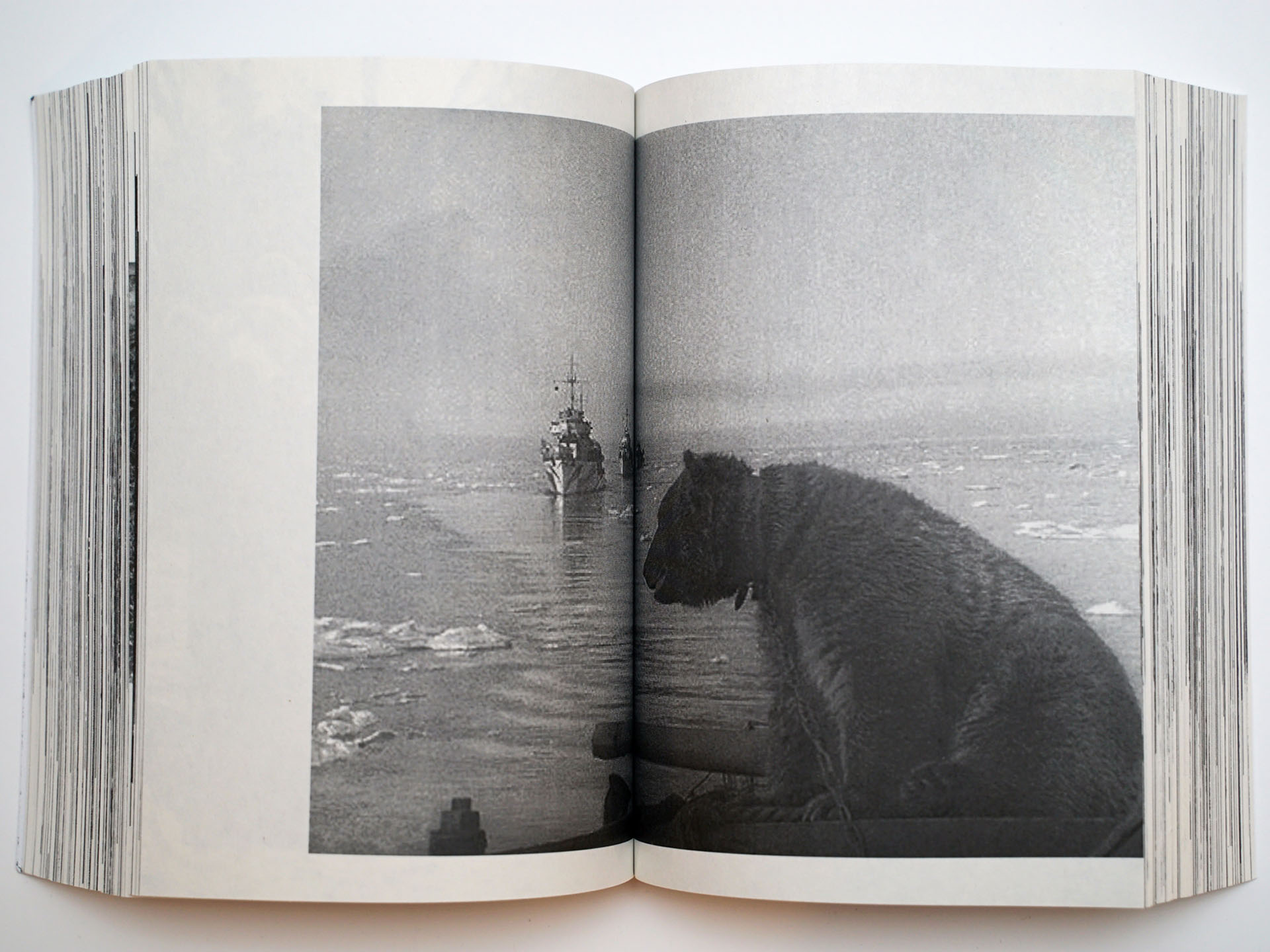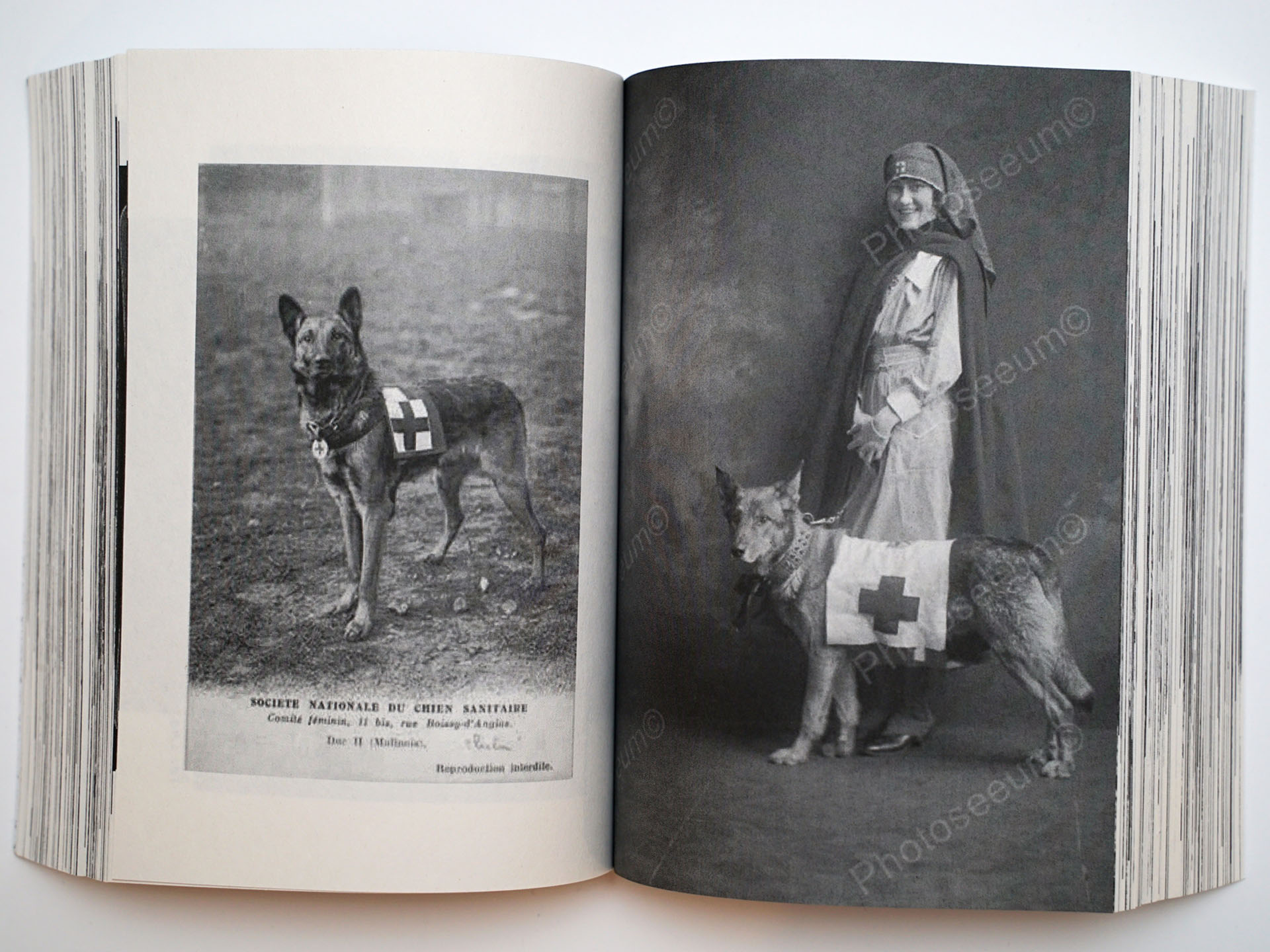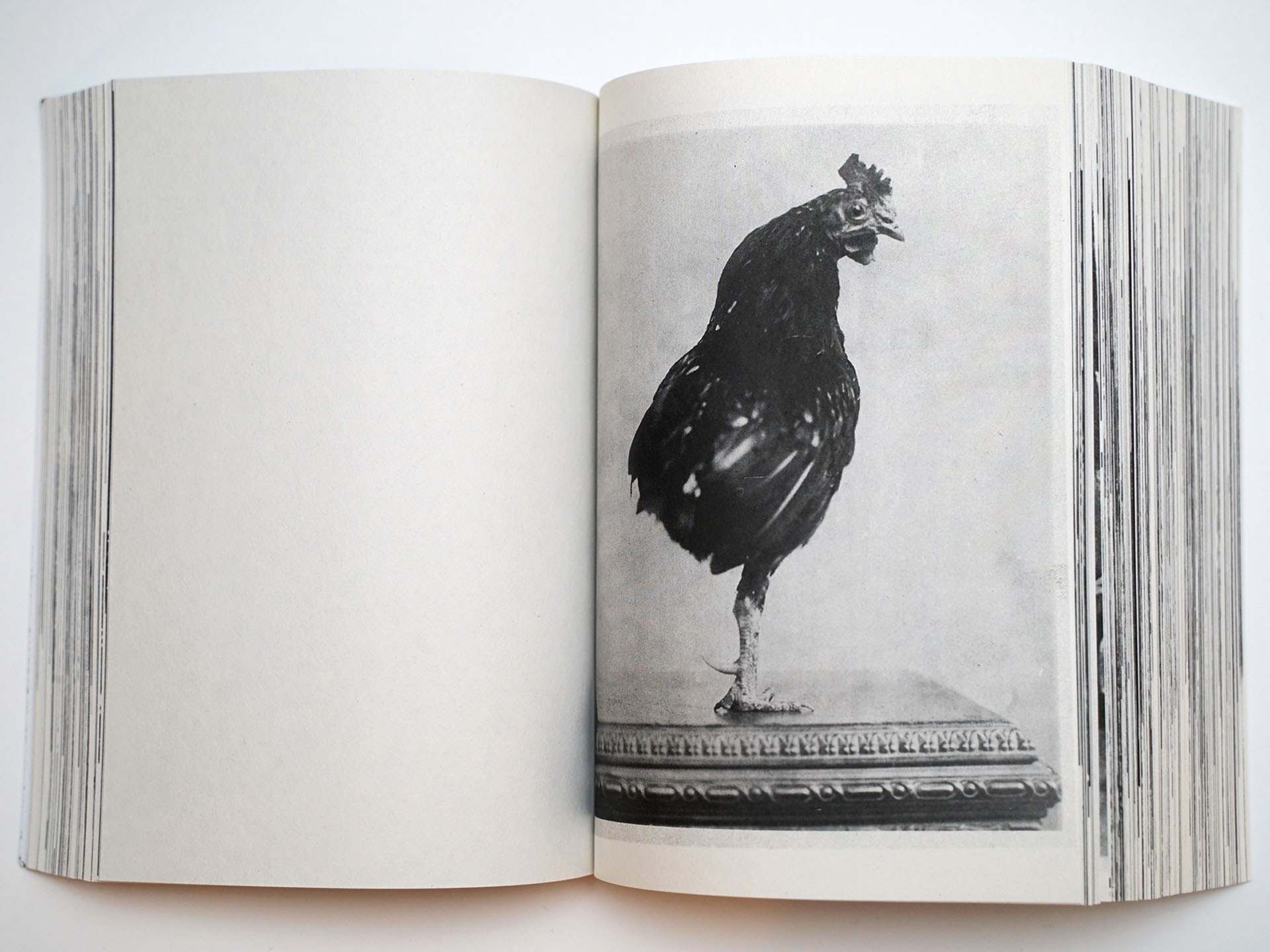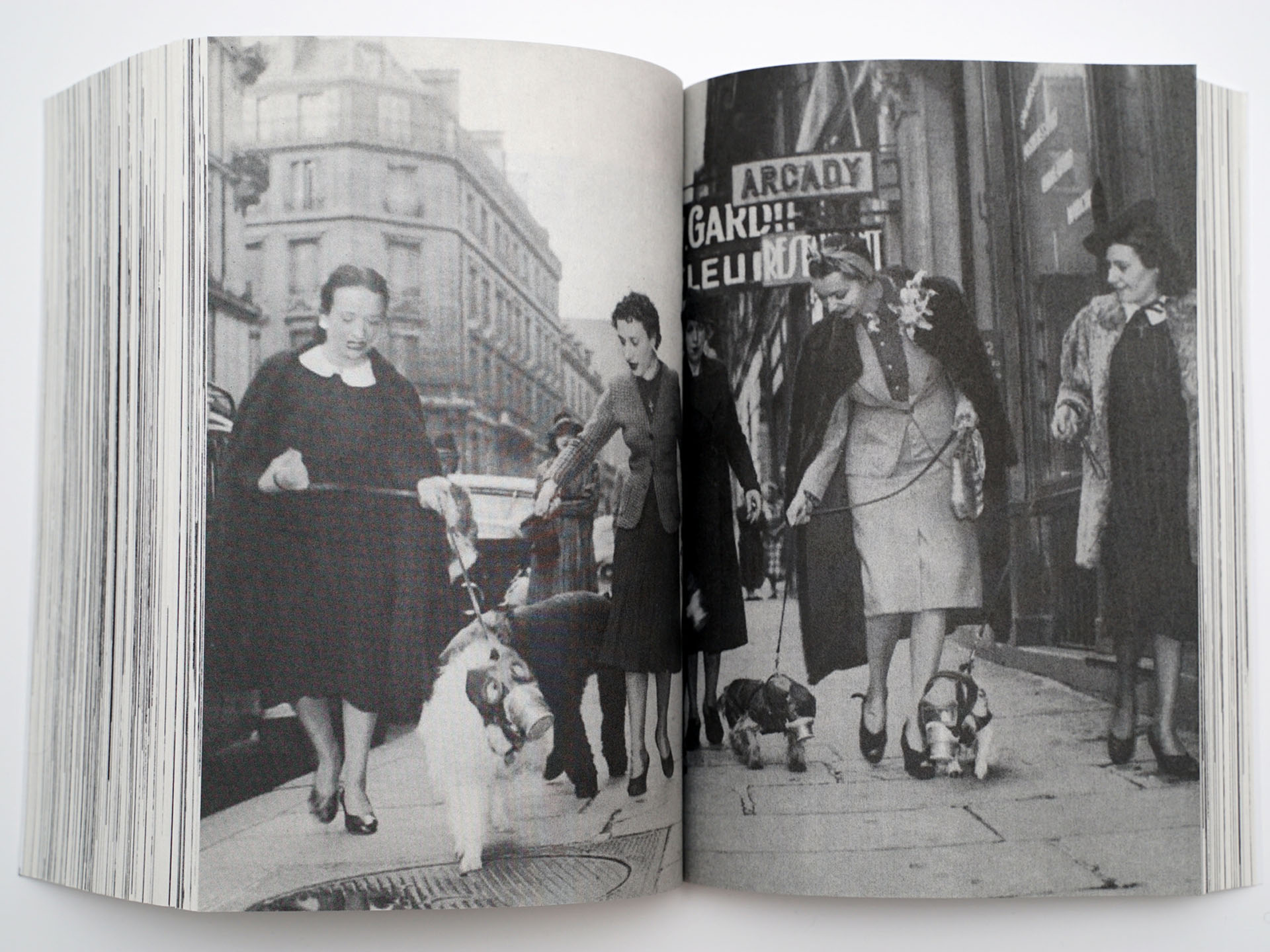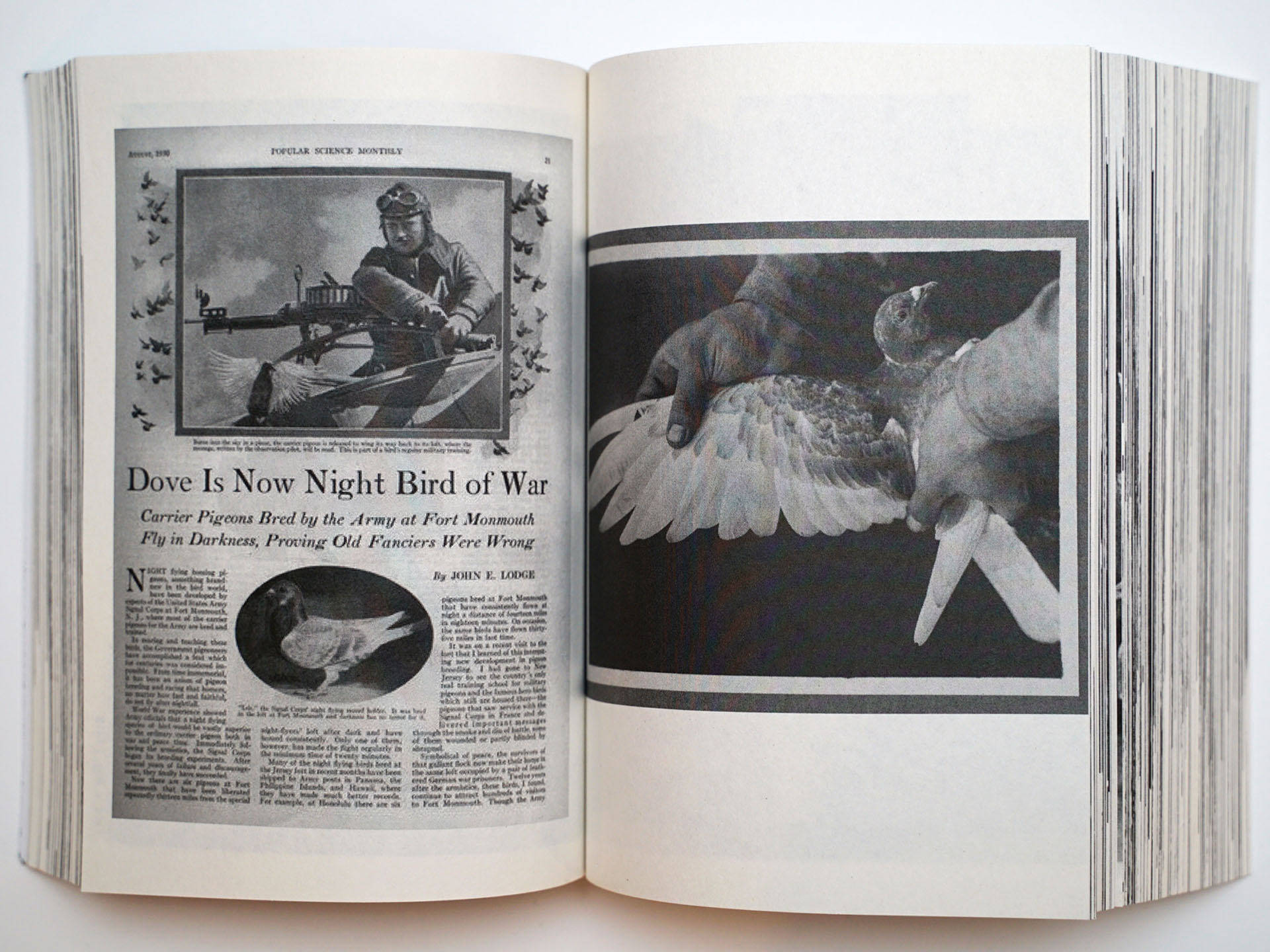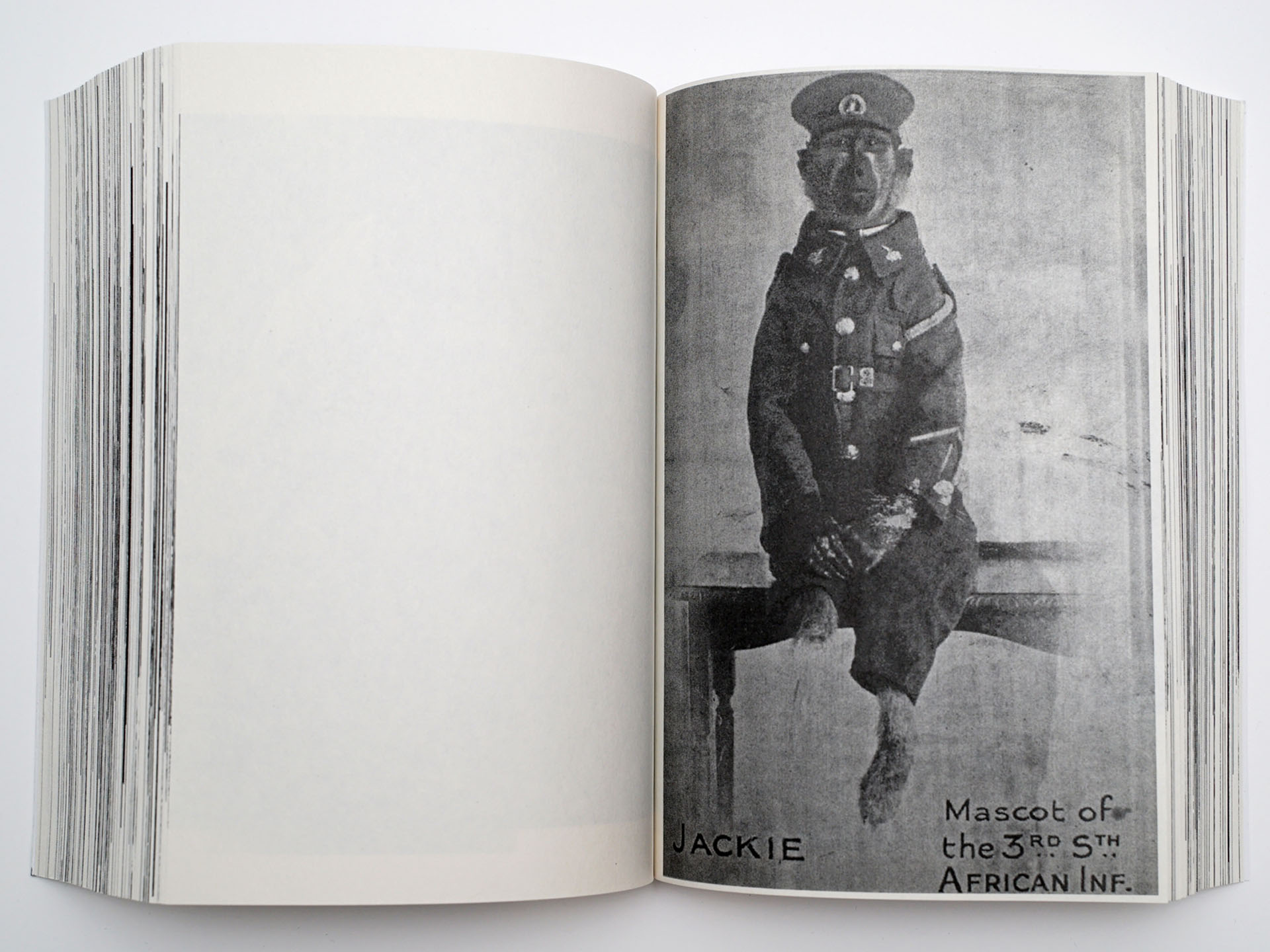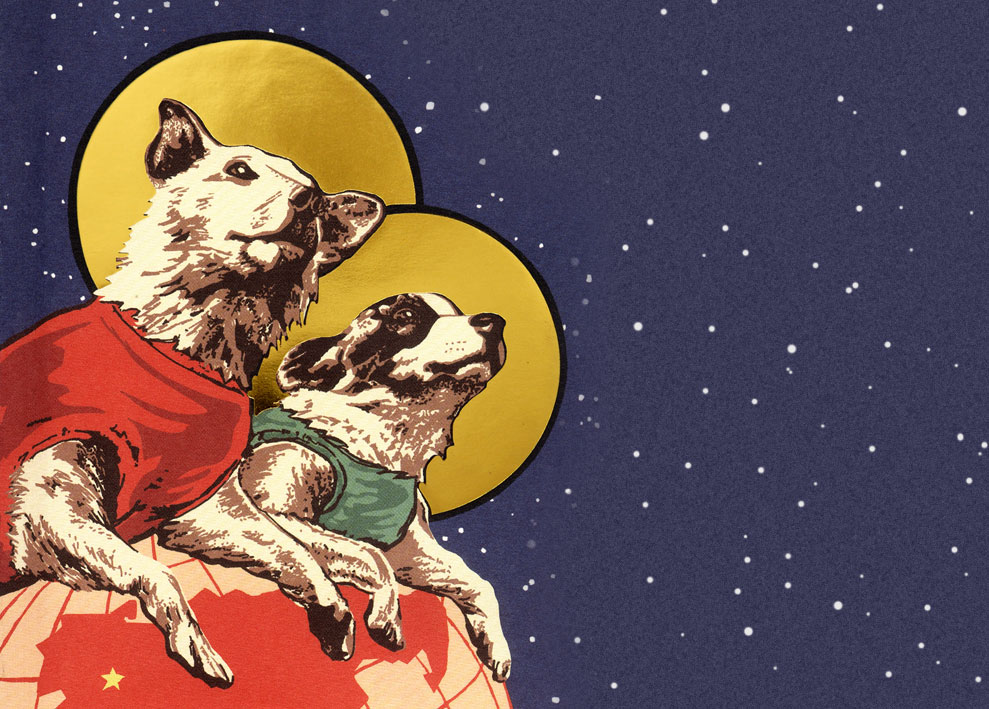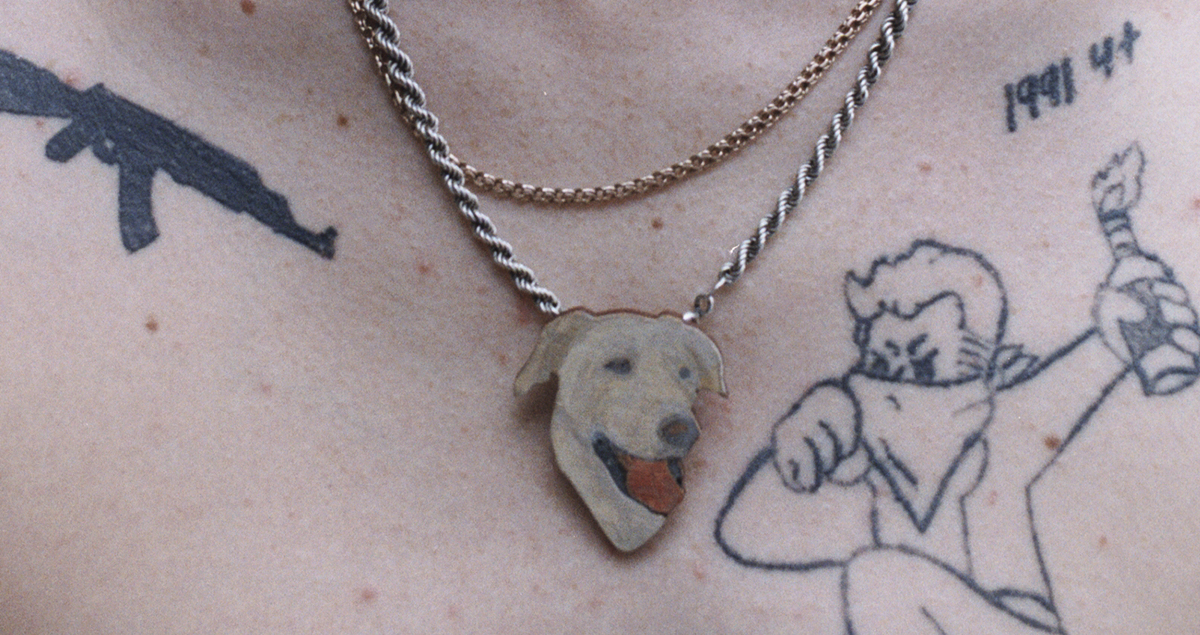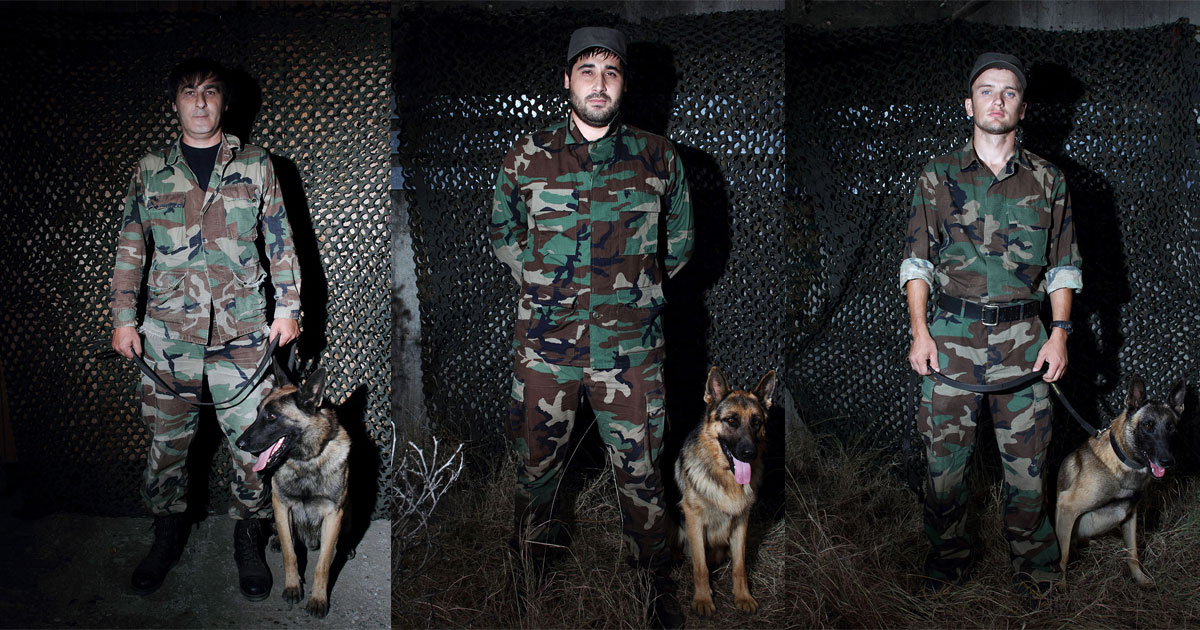Spy pigeons? Military dolphins? One artist confronts our weaponisation of animals
In an extract from her recent book Between Light and Storm, nature writer Esther Woolfson suggests that our attempts to apprehend the intelligence of other species fall short because “too often we want it to be a mirror of our own.” When we look at animals, it is ourselves that we perceive or recognise in their actions and traits. Woolfson calls effort to understand the cognitive abilities of other species as “an unfinished and never-ending quest.” Shifters, an artist’s book by Marta Bogdańska, takes up this quest. Through 750 pages of archival material and photographs, the book presents a visual history of how the intelligence of animals has been used by organisations including the military and secret services, the Red Cross and the police, to complete tasks too dangerous, difficult, or inconvenient for humans to perform. But Bogdańska also suggests that in shifting between different roles, the animals we exploit may harbour intentions, motivations, and intelligence that we are, as of yet, unable to comprehend.
Animal labour, “after the work of slaves and women,” Bogdańska states, is “the last untouched area of complete exploitation.” Shifters physically manifests the scale of this labour. “I felt that the book would give me this very material way of showing the weight of this issue,” Bogdańska explained. “I wanted to show how, in this really small amount of time, we have already gathered so much material and so many examples of animals being used, working for us, suffering, all these emotions that they felt. I wanted to make it somehow visible and tangible.”
One source Bogdańska drew on in her research was a cache of CIA documents, which were declassified in 2019
For this particular aim, Bogdańska was influenced by the philosophy of Eric Baratay, a French historian who she describes as a “guru of animal studies”. Baratay developed the idea that we should consider history from an animal’s perspective. “I found this a very interesting idea,” Bogdańska recalls. “Of course, there are a lot of problems with this way of thinking, because we are people, and we cannot really leave our anthropocentric perspective, but it still is an interesting attempt, and one worth trying.”
Bogdańska was initially drawn to the topic when she noticed several articles about animals suspected of being spies. She saw a pattern to how these stories were reported; they would first appear in local newspapers in countries like Egypt or India, then would be picked up by publications such as the BBC or LA Times. In this new context, the accusations of spying were presented in a light-hearted manner, as the animals were not predominantly being used for espionage, but rather often fitted with tracking devices for scientific research or conservation purposes. However, when Bogdańska began to research the topic, she realised the mocking attitude of the Western media was misplaced, discovering a long and often overlooked history of animals being used for such purposes.
Shifters begins with a selection of these articles, outlining various allegations — from a Pakistani spy pigeon to a dolphin turned into a murderer by Israel. This is followed by examples of even more implausible purposes for which animals have been used, that reveal the depths of human resourcefulness in finding ways to capitalise on animals’ tendencies and capabilities — from horses and elephants used to transport heavy goods and weaponry, to pigeons used for aerial photography and reconnaissance, or dolphins trained by the CIA for mine hunting and force protection missions.
The book’s 14 chapters are loosely arranged around the biographies of individual animals. One such story, well-known in Poland, is that of Wojtek, an orphan bear cub who was taken in by the Polish Army during the Second World War. Wojtek was initially a mascot and would drink beer and smoke cigarettes with the men. However, in order to comply with the army’s strict rule banning pets in combat zones, Wojtek had to be enlisted as a soldier. He was not idle in this role; weighing 440 pounds, he could carry weapons and munitions much faster than the men. After retirement, Wojtek lived out the rest of his days unhappily at Edinburgh Zoo. While many of the people photographed with Wojtek are smiling and laughing, it is hard to read happiness or consent in his expressions. The hard-won, momentary delight captured on the human faces starkly contrasts with the heavy collar and chain visibly restraining Wojtek, which seems to imply that if he were free, his actions might be different from the ones performed before the camera.
Like many of the animals in the book, Wojtek’s role shifted from wild animal to pet-and-play thing, to soldier, and then a curiosity in the zoo. The collected photographs in Shifters also show the ease with which our perspectives towards animals shift — we might laugh at the cat on the cover that is dressed as a Viking warrior, fear the dogs trained to attack, or feel affectionate towards a tiny puppy held aloft in a soldier’s palm. Many of the photographs show tender relationships between soldiers and animals, who it seems carried the burden of emotional labour as well as the physical toil. In the extreme circumstances of war, where soldiers have been trained to kill their fellow man, they appear to retain a sense of humanity through their closeness with animals. This contrast in attitude is troubling because, as Bogdańska points out, “they sometimes gave a lot of time and affection to all these animals, but then were able to kill each other with such cruelty.” The soldiers’ allegiances were fickle, too, and the book does not hold back from showing this side of the story with the final chapter, titled “Dead Bodies”. Despite the men’s affection, the animals “either get killed, or stuffed,or eaten” Bogdańska bluntly puts it.
One source Bogdańska drew on in her research was a cache of CIA documents, which were declassified in 2019. They relate to a program of animal experiments that took place from the 1950s to the 1970s, somewhat misleadingly titled “Animal Partners”. The documents provided information about the more outlandish and grisly attempts at controlling animals that feature in the book, including details of devices embedded in the brains of dogs to remotely control their movements. But they also offered a useful end point for Bogdanska’s research, which otherwise might have been never-ending, as many of the uses and abuses of animals that it features continue to this day. For example, it was recently announced that Kuno, a military dog, will be awarded the PDSA Dickin Medal for saving the lives of British soldiers fighting al-Qaeda in Afghanistan. This act of bravery cost Kuno injuries to his back legs that led to the loss of a paw. Naming a military or service animal a hero assuages human guilt more than it rewards the animal, as the act relies on concepts like valour or sacrifice, which are, presumably, meaningless to animals. Heroisation is something Bogdańska aims to avoid, or even dismantle. “The figure of the hero is super important for the military narrative; I wouldn’t want to repeat that. I think they would probably be much happier if we allowed them to live and gave them rights and freedom instead of a medal and monument.”
While not wanting to be didactic, Bogdańska hopes Shifters will prompt readers to reconsider our relationship with animals, partly through the play between the word “agent” and “agency”. As she outlines, for the animal rights movement, the concept of agency “becomes a central point of thinking about animals and their subjectivity and intentionality. I would like the reader to start thinking that maybe these animals have their own agency. Maybe they are doing something completely different that we don’t even know about, maybe they are using us in some ways.”
Through her research, Bogdańska only encountered one example of animals outright refusing to cooperate. During the Second World War, both the Swedish and the Russians attempted to train moose to be used by the cavalry. “It turned out that the moose were not happy about that, and didn’t want to do it,” she explains. “The whole species had to be tossed aside. This is a great victory for moose, they were left alone and managed to probably have a better life because of that.” There is no lack of skill and ingenuity displayed by the animals performing tasks throughout Shifters, but it seems that in this refusal, the moose showed the most intelligence.
